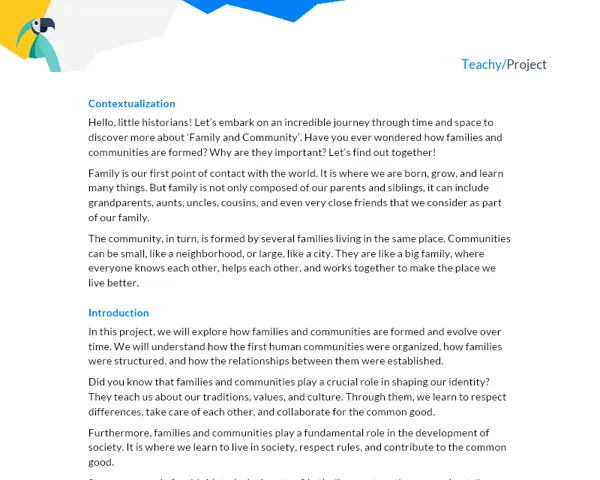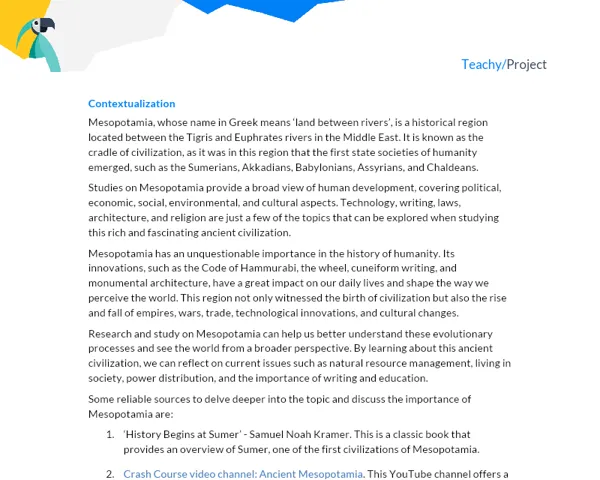Contextualization
Theoretical Introduction
Protestantism is one of the main branches of Christianity, which emerged in the 16th century from the religious Reform movement initiated by Martin Luther. This movement caused a profound transformation in the religious landscape of Europe, challenging the authority of the Catholic Church and giving rise to various Protestant denominations.
The development of Protestantism is intrinsically linked to the cultural and social processes of the time, especially Humanism and the Renaissance. More than just a mere change in the religious structure, the Protestant Reformation was a reflection of the intellectual, political, and economic transformations of the period.
The concepts of freedom of thought, criticism of religious authority, and emphasis on individual reading and interpretation of the Bible were highlighted landmarks of the Protestant movement. These concepts challenged not only the Catholic hegemony but also brought about political and cultural changes that impacted the society of the time and the world as we know it today.
Importance and Contextualization
Protestantism has great relevance in historical studies, considering its role in shaping the values and cultural identity of various Western societies. In countries like the United States and Germany, for example, Protestantism was fundamental in shaping the work ethic and moral values that prevail to this day.
Furthermore, understanding Protestantism is essential to comprehend the religious conflicts that shaped modern history. This theme sheds light on how power struggles and differences in the interpretation of sacred texts can result in profound changes in society.
Atividade Prática
Activity Title: "Reforming History: A Dive into Protestantism"
Project Objective
The objective of this activity is to provide students with a deep understanding of the concepts and principles of Protestantism and its historical influence on society. Students will research the Protestant Reformation, analyze its cultural and social impacts, and present their findings in a creative and collaborative manner.
Detailed Project Description
Groups of 3 to 5 students will create a multimedia presentation on Protestantism. The presentation should include an overview of the history of Protestantism, significant analyses of the Protestant Reformation and its cultural and social impacts. Students should seek to understand how the Catholic Church addressed the topic at the time and how the reforms influenced Humanism and the Renaissance.
Students should include discussions on important figures, such as Martin Luther, and key events, such as the Diet of Worms. The presentation should contain visual elements, such as images, graphics, and maps to illustrate the geographical spread of Protestantism and its various denominations.
Students should prepare an oral presentation based on their research and the created multimedia presentation, which will be shared with classmates to promote a broader dialogue on the topic.
Required Materials
- Computer with internet access for research and presentation creation
- Books, articles, and other resources for research
- Presentation software (such as Microsoft PowerPoint, Google Slides, or Prezi)
Detailed Step-by-Step
- Form groups of 3 to 5 students.
- Investigate and research Protestantism, the Protestant Reformation, and their social and cultural implications. Students should use recommended resources and other available sources to deepen their knowledge.
- Discuss findings as a group, sharing and synthesizing information.
- Plan and develop a multimedia presentation with the collected information. The presentation should include clear visual and textual descriptions and be logically organized.
- Prepare an oral presentation to accompany the multimedia presentation. Students should rehearse the presentation as a group to ensure a smooth and effective delivery.
- Present the research and conclusions to the class, answering any questions that may arise.
Delivery and Documentation
After completing the presentation, students should prepare a detailed report on the project. The report should include:
- Introduction: Provide context on the theme of Protestantism and explain the project's objective.
- Development: Describe the theory behind Protestantism and the Reformation. Explain in detail the activity carried out, the methodology used, and the results obtained.
- Conclusions: Conclude by summarizing the main points, the learnings acquired, and the conclusions drawn from the project.
- Bibliography: Indicate the research sources used in the project, including books, websites, videos, etc.
As a result of this project, students will deeply understand the core aspects of Protestantism and its relationship with modern and current history, as well as develop collaboration, research, presentation, and writing skills.


